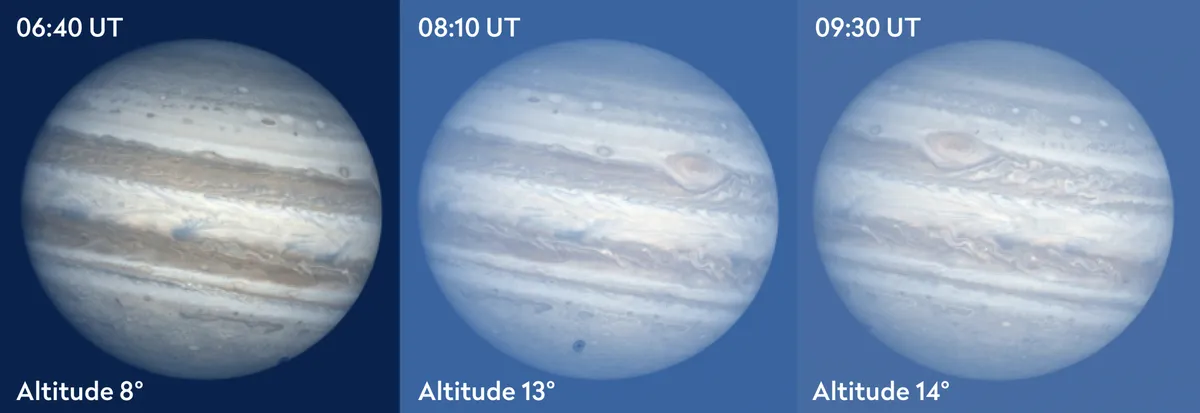Gas giant Jupiter has many moons. Most are pretty small and too faint for amateur equipment to record. Only four are readily accessible to amateurs, the so-called Galilean moons first identified as satellites by Galileo Galilei in 1610.
In order of distance from Jupiter, these are Io, Europa, Ganymede and Callisto. All of the Galileans have orbits that are close in orientation to the equatorial plane of Jupiter.
Jupiter’s 3.1° axial tilt is small compared to the 23.4° of Earth. From Earth, Jupiter’s Galilean moons appear to move back and forth around the planet in narrow ellipses.
Narrow though they are, the greater distance of Callisto means that its orbital ellipse is wide enough for it and its shadow to miss Jupiter’s disc for most of the time.
That is until Jupiter approaches an equinox, something it does twice in its 11.8-year orbit.
Separated by approximately six years, the next Jovian equinox occurs in 2021 and in the months before and after this time, it is possible to see Callisto and its shadow transit Jupiter’s disc.

- Starting at 06:40 UT on 26 February, against the backdrop of a brightening dawn twilight sky, Callisto’s shadow can be seen crossing Jupiter’s disc.
- It is possible to see Jupiter in daylight, but the fact that it can be seen against a darker sky from 06:00 UT, and Jupiter sits between Mars and Saturn will give you something to lock on to.
- Stay with the planet as the sky begins to lighten and you’ll see the large shadow begin its crossing.
- The transit continues until around 09:30 UT. Sunrise from the centre of the UK is just after 07:00 UT.
There will be further transits visible over coming months, but with the vagaries of the British weather it pays to take every opportunity that comes along.
Pete Lawrence is an experienced astronomer and a co-host of The Sky at Night. This article originally appeared in the February 2020 issue of BBC Sky at Night Magazine.
